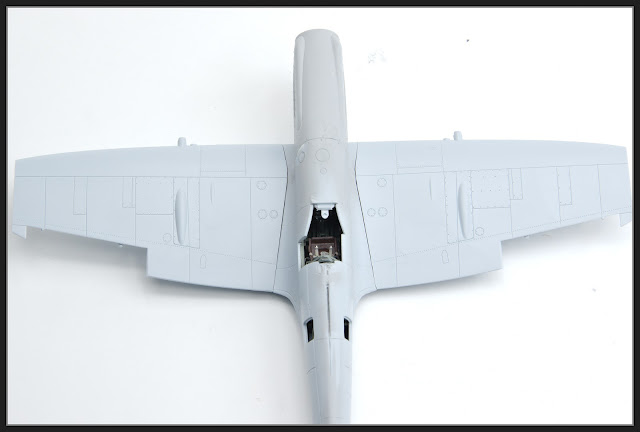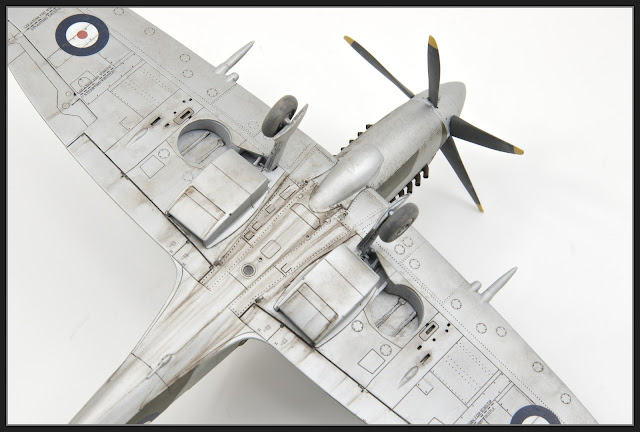2022 modelling wise, was pretty good despite only managing seven completions. I put this down to the number of jets I got through this year.
1/48 Eduard Supermarine Spitfire 1A - No. 603 Sqn RAF
Eduard's excellent MK 1 Spitfire. The best kit of this subject in 48 scale IMHO. Built straight from the box including the decals.
Depicted as aircraft R6835 XT-W flown by a New Zealand Ace Brian J. Carbury,
1/48 Tamiya Su-122 Self-Propelled Howitzer
Tamiya's fun little Su-122 again straight from the box.
I think I managed to fluke winning 2022 NSW Scale Model Show's Panzer tracks trophy with this one. The base work was actually a lot of fun.
1/48 Hasegawa A-4C Skyhawk - Argentine Air Force - "Malvinas"
Hasegawa's A-4C in the attractive Argentine scheme.
This kit was built as an entry for the 2022 NSW Scale Model Show's 40th Anniversary of the Falklands Conflict category. It was also built to take part in the Model Geeks Podcast's A-4 Skyhawk Group build. It includes some 3D printed bombs a friend printed up for me and an Aerobonus pilot.
1/48 Eduard Mirage IIICJ "Shahak"
As a kid I had a aircraft magazine with a fold out of an Israeli Mirage or Nesher with those big yellow triangles so it was inevitable that I'd want to add one to the cabinet.
The kit took a bit of work but I was happy with the result. I decided to paint the markings rather than use the decals and I reckon they came out well.
1/48 Hobby Boss F/A-18E Super Hornet VFA-87 Golden Warriors
This was supposed to be a quick build alongside a mate who was building the Meng kit (click here for his build). It ended up blowing out to 5 months for a number reasons.
From the reference photos I collected I know this actual jet wasn't as weathered as I have modelled but I wanted to do a relatively heavily weathered low viz aircraft so accuracy in that department went out the window.
All in all I was pretty happy with the result.
1/48 Airfix de Havilland Vampire F.B. Mk.5 - No 75 Sqn Royal New Zealand Air Force
After the Superhornet I wanted a quick and easy palette cleanser (or slammer build in the new parlance).
I had a couple of the new Airfix Vampires in my “For Sales pile that weren’t looking like being sold anytime soon so despite having little interest in the subject it went to the bench.
A simple relatively well fitting kit that turned out to be my most enjoyable build of the year. Would have been even simpler if I'd done it in flight. Built form the box bar the after market decals to make an RNZAF machine.
1/48 Airfix Supermarine Spitfire FR MK XIVe - 17 Sqn Royal Air Force - Japan 1946
Last completion for 2022 was the subject for the 2023 NSW Scale Model Shows Airfix Cup. Not Airfix's best work I'm afraid but I was still happy with the result.
I chose this unusual scheme from a post WW II Spitfire based in Japan. Decals are from Freightdog and there was a bit of aftermarket thrown at it as well.
Now for a couple that didn't get over the line. Hopefully these will feature in next years yearbook.
1/48 Fly Strikemaster Mk 88
Impulse buy and build. A modelling new years resolution is to ignore those. I got bogged down 3D designing the Pylons and getting them printed. I have a feeling Airfix will get tot he Jet Provost / Strikemaster family just after I finish this.
1/48 Tamiya T-55
I want to do a middle eastern subject but got bogged down trying to chose a scheme.
At this stage I have decided to copy bits and pieces from other peoples T-55's and come up with a fictional vehicle. I just need to get the finger out.

















































































